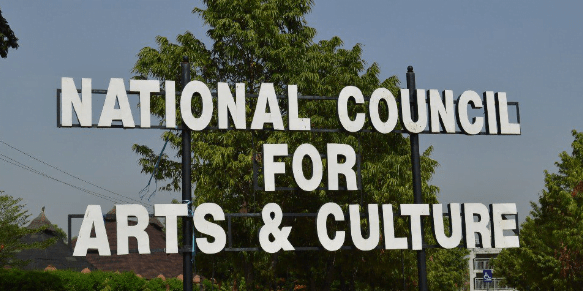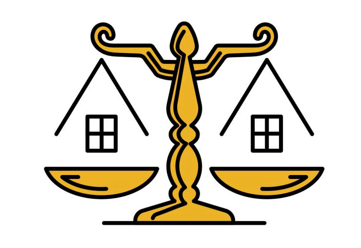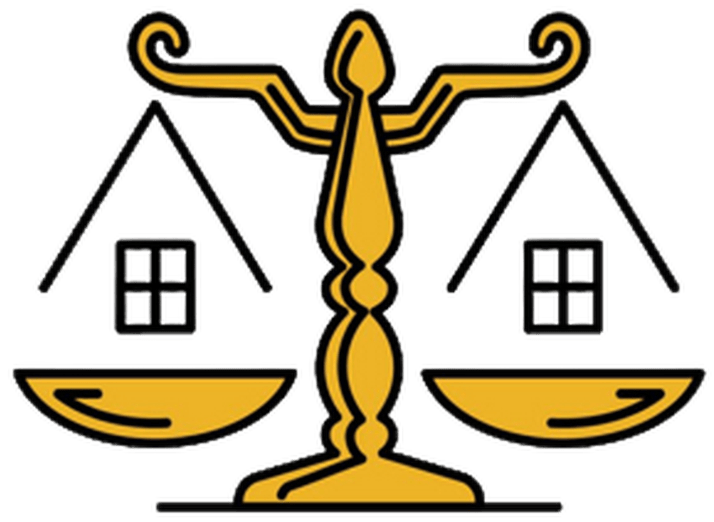

Critical Legal Pitfalls in Cultural and Arts Center Construction in Nigeria: What You Must Know
Introduction
The construction of cultural and arts centers in Nigeria represents a significant investment in the nation’s cultural heritage and artistic development. These centers are vital for preserving Nigeria’s diverse cultural heritage, promoting the arts, and fostering community engagement. However, the process of constructing such facilities is fraught with legal complexities that must be addressed to ensure the successful realization of these projects. This article explores the key legal issues in cultural and arts center construction in Nigeria, offering insights into regulatory frameworks, compliance requirements, and strategic approaches for navigating the legal landscape effectively.
Nigeria is a nation rich in cultural heritage and artistic expression, with a legacy that spans centuries and encompasses a multitude of ethnic traditions, languages, and creative disciplines. From traditional masquerade festivals to contemporary art exhibitions, the country has continuously demonstrated a profound commitment to celebrating its diverse cultural identity.
As such, the development of cultural and arts centers across Nigeria presents an invaluable opportunity to institutionalize these traditions and foster a thriving environment for creative expression. However, despite the positive implications of such infrastructure projects, they often face significant legal challenges that can hinder or completely obstruct progress if not properly addressed from the onset.
Legal issues in cultural and arts center construction in Nigeria are multifaceted and touch on a variety of domains including land acquisition, environmental law, building and zoning regulations, intellectual property, and the preservation of cultural heritage.
These challenges stem from both statutory frameworks and customary practices, resulting in a complex legal environment that requires careful navigation by all stakeholders involved. Unlike purely commercial buildings, cultural and arts centers often serve public functions, are located in historically or spiritually significant sites, and involve engagement with multiple layers of government and community authority. This unique context means that developers, architects, legal consultants, and investors must approach such projects with a higher level of diligence and cultural sensitivity.
One of the most critical legal challenges lies in land tenure and acquisition. In Nigeria, land is governed primarily by the Land Use Act of 1978, which vests all land in each state in the hands of the state governor. This means that even where a private party has customary rights to land, a certificate of occupancy issued by the state must be obtained for legal recognition.
However, acquiring this certificate is often fraught with bureaucratic delays, unclear titles, and conflicting claims—especially in areas where land is communally held or regarded as sacred. Many cultural and arts center projects have been delayed or canceled entirely due to disputes arising from ambiguous land ownership or failure to adequately consult local communities who regard themselves as the rightful custodians of the land.
Moreover, environmental and heritage concerns pose another layer of legal complexity. Cultural centers are often built on or near areas considered environmentally sensitive or culturally significant. This necessitates an Environmental Impact Assessment (EIA), which must be submitted to the appropriate government agency, such as the Federal Ministry of Environment, for approval before construction can commence. Failing to obtain EIA clearance can attract legal sanctions, fines, and even demolition of structures. Where heritage sites are involved, further approvals must be sought from bodies like the National Commission for Museums and Monuments. Unfortunately, the lack of coordination between federal, state, and local regulatory bodies sometimes results in conflicting directives, legal confusion, and project stagnation.
Zoning and development control regulations further complicate the legal landscape. Different states in Nigeria have varying standards when it comes to urban planning and zoning, and cultural centers, due to their expected high traffic and public use, are often required to meet stricter standards. Developers must apply for planning permits, building plan approvals, and, in some cases, special use exemptions. These approvals are not always transparent or standardized, and the process can be marred by corruption and lack of accountability. A project that does not strictly adhere to these regulatory requirements may be subject to work stoppage, revocation of permits, or legal action.
Another often overlooked legal dimension is intellectual property and contractual governance. Cultural centers often incorporate artistic content, from architectural design to performance works, which are protected under Nigerian intellectual property laws. Developers must ensure that appropriate licensing agreements, artist rights, and usage consents are properly documented and legally enforceable. In addition, construction contracts must be meticulously drafted to address issues such as delays, cost overruns, labor disputes, and quality assurance—all within the framework of Nigerian contract and labor law.
The importance of community engagement and social licensing cannot be overstated in the construction of cultural infrastructure. Many failed projects across Nigeria are testimonies to what happens when developers ignore the social and legal expectations of host communities. These communities often possess informal but deeply respected legal structures that govern how land and cultural expressions are used. Developers who sidestep these frameworks in favor of state-issued documents alone may find themselves embroiled in legal and social conflict, including protests, litigation, or even violent opposition. Thus, stakeholder mapping, community consultations, and formalized community-benefit agreements are critical legal instruments in achieving sustainable and conflict-free development.
In sum, the legal issues involved in constructing cultural and arts centers in Nigeria are not merely bureaucratic obstacles—they are essential considerations that influence the viability, sustainability, and legitimacy of such projects. With Nigeria’s increasing interest in promoting its cultural sector as a tool for economic diversification and international soft power, there is a pressing need to address these legal complexities in a holistic and strategic manner. The future of Nigeria’s cultural infrastructure depends not only on visionary architecture and generous funding but also on a clear, proactive legal framework that supports creativity while respecting heritage, law, and community rights.
The Importance of Cultural and Arts Centers in Nigeria
1. Promoting Cultural Heritage
– Overview:
Cultural and arts centers play a crucial role in preserving and showcasing Nigeria’s rich cultural heritage. They provide a platform for artistic expression, traditional performances, and exhibitions.
– Impact:
By supporting cultural preservation and promoting the arts, these centers contribute to national identity and cultural pride, enriching the community and attracting tourism.
2. Enhancing Community Engagement
– Overview:
These centers serve as hubs for community activities, educational programs, and cultural events, fostering local engagement and development.
– Impact:
Cultural and arts centers create opportunities for community involvement, education, and social cohesion, strengthening community ties and promoting cultural exchange.
3. Economic and Tourism Benefits
– Overview:
Well-developed cultural and arts centers can boost local economies by attracting visitors and stimulating business activities.
– Impact:
The centers contribute to economic growth through tourism, local spending, and the creation of job opportunities in the arts and related industries.
Key Legal Issues in Cultural and Arts Center Construction
1. Land Acquisition and Zoning Regulations
– Challenge:
Securing suitable land for cultural and arts centers involves navigating complex land acquisition processes and zoning regulations.
– Legal Considerations:
Land Use Act: The Land Use Act governs land ownership and use in Nigeria. It centralizes land control under state governors and outlines procedures for land allocation.
Zoning Laws: Local zoning regulations may impose restrictions on land use, impacting the design and location of cultural and arts centers.
– Strategy:
Conduct thorough due diligence on land titles and zoning requirements. Engage with local authorities to ensure compliance with land use and zoning regulations.
2. Environmental Impact Assessment (EIA)
– Challenge:
Cultural and arts center construction may have environmental implications, requiring assessment and mitigation measures.
– Legal Considerations:
EIA Act: The Environmental Impact Assessment (EIA) Act mandates the assessment of potential environmental impacts and the implementation of measures to mitigate adverse effects.
– Strategy:
Perform a comprehensive EIA to identify and address environmental concerns such as waste management, land use, and ecological impact. Develop an environmental management plan to ensure compliance.
3. Compliance with Building Codes and Standards
– Challenge:
Ensuring that construction meets safety, quality, and accessibility standards is essential for the successful completion of cultural and arts centers.
– Legal Considerations:
National Building Code: The National Building Code provides guidelines for construction practices, safety standards, and building design.
– Strategy:
Adhere to the National Building Code and local building regulations to ensure that the construction meets all safety and quality standards. Engage with experienced architects and engineers to comply with design and construction requirements.
4. Public Procurement and Contractual Agreements
– Challenge:
Navigating public procurement processes and managing contractual agreements can be complex, particularly for government-funded projects.
– Legal Considerations:
– Public Procurement Act:
This Act regulates procurement processes for government contracts, including bidding, contract awards, and project management.
– Strategy:
Follow the Public Procurement Act’s guidelines for competitive bidding and contract management. Develop clear and comprehensive contractual agreements that outline project scope, responsibilities, and dispute resolution mechanisms.
5. Cultural Heritage and Preservation Laws
-Challenge:
Construction projects may impact sites of cultural or historical significance, necessitating compliance with heritage preservation laws.
– Legal Considerations:
National Commission for Museums and Monuments Act: This Act regulates the preservation of cultural heritage and historical monuments in Nigeria.
– Strategy:
Ensure that the construction does not adversely affect any sites of cultural or historical significance. Obtain necessary approvals from heritage preservation authorities if the project involves areas of cultural importance.
6. Health and Safety Regulations
– Challenge:
Ensuring the health and safety of workers and visitors during construction and operation is crucial for the success of cultural and arts centers.
– Legal Considerations:
Occupational Safety and Health Administration (OSHA) Standards: These standards provide guidelines for workplace safety and health, including construction-specific regulations.
– Strategy:
Implement comprehensive safety protocols, including worker training, safety equipment, and emergency response plans. Regularly inspect the construction site to identify and address potential hazards.
Best Practices for Navigating Legal Issues
1. Engage with Legal and Regulatory Experts
– Strategic Engagement:
Collaborate with legal and regulatory experts to navigate the complexities of land acquisition, environmental assessments, and compliance requirements.
– Documentation:
Prepare and submit all necessary documentation, including land acquisition records, environmental impact assessments, and building permits, to ensure regulatory compliance.
2. Develop Comprehensive Project Plans
– Planning:
Develop detailed project plans that address legal and regulatory requirements, including safety standards, environmental management, and procurement processes.
– Implementation:
Ensure that project plans are executed according to legal and regulatory guidelines, with regular reviews and updates as needed.
3. Foster Stakeholder Engagement
– Engagement:
Engage with stakeholders, including local communities, cultural organizations, and government authorities, to address concerns and gather input.
– Communication:
Maintain open and transparent communication with stakeholders to build trust and ensure that the project aligns with community needs and expectations.
4. Monitor and Review Compliance
– Monitoring:
Regularly monitor compliance with legal and regulatory requirements throughout the construction process. Conduct periodic reviews to identify and address any issues.
– Reporting:
Maintain accurate records of compliance activities and report any non-compliance issues to relevant authorities promptly.
5. Implement Risk Management Strategies
– Risk Management:
Develop and implement risk management strategies to address potential legal, environmental, and safety risks associated with the construction project.
– Mitigation:
Identify and mitigate risks through proactive planning, regular inspections, and adherence to legal and regulatory standards.
Case Studies: Successful Cultural and Arts Center Projects
1. The National Museum Abuja
– Overview:
The National Museum Abuja, a prominent cultural institution, faced legal and regulatory challenges related to land acquisition, environmental impact, and heritage preservation.
– Outcome:
The project successfully navigated these challenges through effective collaboration with legal experts, adherence to building codes, and engagement with heritage preservation authorities. The museum now serves as a key cultural landmark in Nigeria.
2. The Oyo State Cultural Center
– Overview:
The Oyo State Cultural Center project involved complex procurement processes and compliance with safety and environmental regulations.
– Outcome:
By adhering to procurement guidelines, implementing comprehensive safety protocols, and conducting environmental assessments, the project achieved successful completion. The cultural center now supports local arts and cultural activities.
Conclusion
Addressing legal issues in cultural and arts center construction in Nigeria is essential for the successful realization of these significant projects. By understanding and navigating key legal considerations, including land acquisition, environmental impact, building codes, and procurement processes, stakeholders can effectively manage the complexities of construction.
Implementing best practices, engaging with legal and regulatory experts, and fostering stakeholder engagement will contribute to the successful completion of cultural and arts centers, enhancing Nigeria’s cultural heritage and community development. As Nigeria continues to invest in cultural and arts infrastructure, addressing legal issues proactively will play a crucial role in achieving impactful and sustainable development across the country.
By leveraging these insights and strategies, stakeholders can navigate the legal landscape of cultural and arts center construction, ensuring successful project outcomes and contributing to the preservation and promotion of Nigeria’s rich cultural heritage.
As Nigeria positions itself for socio-economic growth through the promotion of arts and culture, the construction of cultural and arts centers must be guided by a deep respect for legal frameworks, community values, and sustainability imperatives. These centers, which hold the promise of celebrating the nation’s rich traditions and nurturing its creative industries, must be built on a foundation of robust legal compliance. The challenges observed in existing and proposed projects underscore the importance of legal foresight in the planning and execution phases of cultural infrastructure development.
The legal pitfalls that surround these types of projects, from land acquisition to zoning approval, and heritage protection to intellectual property, reveal a system in need of reform, clarity, and cohesion. The Land Use Act, while foundational, often clashes with customary practices, creating friction that could easily be mitigated through legislative review and harmonization. A more responsive and inclusive land governance system would reduce the volume of land-related disputes that currently plague the sector and provide a clear path for developers and communities to collaborate effectively.
In the same vein, environmental and cultural heritage protections must evolve to reflect the realities of modern development. It is essential that Environmental Impact Assessments not only assess physical ecological risk but also take into account the cultural significance of land and built heritage. When cultural values are integrated into planning laws and building codes, developers are more likely to design projects that honor local traditions and avoid unintentional desecration or backlash.
Institutional inefficiencies must also be addressed. Regulatory bodies responsible for planning approval, cultural heritage protection, and construction oversight must improve coordination and transparency. The current overlap of functions between federal, state, and local authorities often leads to delays, conflicting directives, and legal uncertainties that hinder project timelines and investor confidence. A one-stop legal framework for cultural infrastructure development, with clear guidelines and standardized requirements, could resolve many of these issues.
Legal practitioners have a pivotal role to play in this transformation. Lawyers and legal consultants involved in construction, cultural affairs, and property law must not only advise clients but also advocate for policy reforms that promote clarity, inclusivity, and efficiency. By providing tailored legal solutions and anticipating regulatory risks, they help prevent costly disputes and foster an environment where cultural projects can thrive legally and socially.
Moreover, engaging communities from the earliest stages of project conception is not just a matter of good public relations—it is a legal necessity. Communities must be seen as partners, not obstacles. Through participatory legal tools such as memoranda of understanding, benefit-sharing agreements, and consultative town hall frameworks, developers can secure what is known as a social license to operate. This approach mitigates conflict, enhances project legitimacy, and embeds cultural centers within the very communities they aim to serve.
As Nigeria charts a course toward becoming a hub of cultural innovation and heritage preservation, it must invest in the legal architecture that supports such aspirations. Enacting a dedicated Cultural Infrastructure Development Act could provide a comprehensive legal backbone for future projects. Such legislation would spell out the rights and obligations of all stakeholders, including developers, government agencies, cultural institutions, and communities, thereby ensuring legal coherence and cultural respect.
The future of Nigeria’s cultural and arts center development lies in the synergy between law, culture, and development. With legal clarity, institutional efficiency, and community collaboration, the country can create a thriving network of cultural hubs that not only promote artistic excellence but also stand as testaments to legal foresight and cultural sensitivity.
For tailored legal advice on cultural infrastructure and arts-related construction projects in Nigeria, reach out to CHAMAN Law Firm. Our expertise ensures your project complies with Nigerian laws while respecting cultural traditions and local interests.
· Cultural Center Construction Nigeria
· Arts Infrastructure Legal Issues
· Land Acquisition and Zoning Laws
· Environmental Impact Assessment (EIA)
· National Building Code Compliance
· Public Procurement Act Nigeria
· Heritage Preservation Laws
· Health and Safety Regulations
· Legal Framework for Arts Centers
· Risk Management in Construction
Contact Us
Chaman Law Firm today. Our offices are conveniently located in Lagos, FCT Abuja, Ogun State, and the UK. We are readily available to assist you with your legal needs. Whether you require consultation, representation, or ongoing legal support, Chaman Law Firm is your trusted partner.
Call us at 08065553671 or email us at info@chamanlawfirm.com to schedule a consultation.


